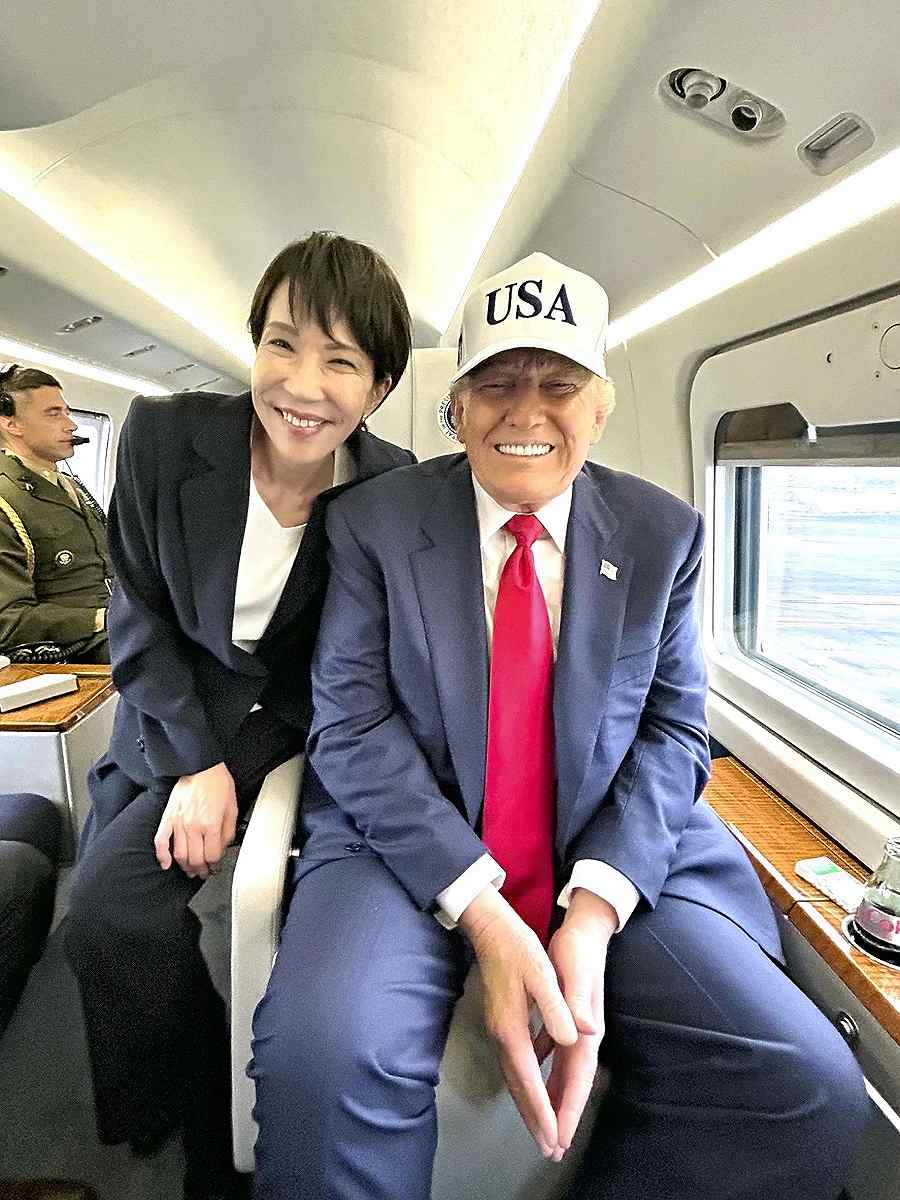Three “Traps” Japan’s Prime Minister Set for Trump — And Why He Never Saw Them Coming
When Donald Trump arrived in Tokyo for his meeting with Japan’s new Prime Minister Sanae Takaichi, the stage seemed set for a cordial, high-profile exchange — golf, handshakes, cameras, and carefully worded statements. But behind Takaichi’s warm smiles and polite gestures, observers now believe there was a layer of quiet calculation.
Those who watched closely noticed something unusual: the faint, knowing smile on Takaichi’s face as she presented Trump with a gift of golf clubs. What looked like a harmless gesture of friendship, analysts say, was the
1️⃣ The Gift That Disarmed Trump
Trump has always been famously passionate about golf — a sport he treats as both leisure and diplomacy. Takaichi knew this. Her team had prepared an exclusive set of gold-plated clubs once owned by the late Shinzo Abe, a subtle link to a friendship Trump still valued deeply.
When Takaichi presented the gift, Trump’s demeanor softened instantly. “Beautiful, absolutely beautiful,” he said, admiring the craftsmanship.
According to Tokyo insiders, that moment shifted the tone of the entire negotiation. Trump’s stance on Japan’s export tariffs — initially aggressive — became far more flexible. Within hours, his delegation agreed to
“It wasn’t manipulation,” a senior diplomat told The Japan Times.
“It was psychological diplomacy — she played the person, not the position.”
2️⃣ The Nobel Nomination That Fed His Vanity
Takaichi’s second move was equally subtle — and even more effective. During a private luncheon, she reportedly told Trump that she intended to
The flattery worked. Trump was visibly delighted, joking, “It’s about time someone noticed.”
But the nomination, analysts now say, was symbolic. No formal paperwork ever followed. Instead, it served as a strategic distraction, allowing Takaichi’s delegation to finalize several key trade clauses while Trump basked in the glow of international praise.
“It was classic Takaichi,” political columnist Hiroko Suzuki wrote. “She understands that diplomacy is 20% negotiation and 80% psychology.”
3️⃣ The English Gambit
Perhaps the most brilliant move of all came during the joint press conference. Takaichi, fluent in both Japanese and English, chose to conduct the entire exchange
To most, it looked like an effort to show respect and efficiency. But behind that choice lay a deeper intent. Speaking in English allowed Takaichi to control rhythm and tone, while preventing Trump’s team from filtering or reframing her statements in real time.
Even more tellingly, her nuanced phrasing and deliberate wordplay subtly challenged Trump’s responses, catching him off guard more than once.
“Language is power,” explained Professor Reiko Matsuda of Keio University. “By speaking English, she took away one of Trump’s usual advantages — the ability to dominate the conversation through speed and interruption.”
Observers noted that Trump often paused or repeated questions during the conference — a sign, experts say, that he was being tactically outmaneuvered.
The Smile That Said Everything
By the end of the visit, the two leaders stood side by side for photographs, smiling broadly. But for those who watched closely, Takaichi’s smile carried an unmistakable glint of satisfaction.
She had achieved what Japan needed: reduced tariffs, reaffirmed security cooperation, and a stronger image of leadership at home — all while letting Trump believe he’d been honored and admired.
“She made him feel like the winner,” one diplomat said, “but in reality, Japan walked away with every point it wanted.”
Diplomacy or Deception?
Was this manipulation or masterful statecraft?
Analysts remain divided, but few can deny that Takaichi demonstrated the kind of soft power Japan has long been known for — diplomacy that disarms through charm, humility, and precision.
Trump left Tokyo praising her as “a wonderful leader and a very smart woman.”
And that may have been the most telling compliment of all — because she had just proven both.




